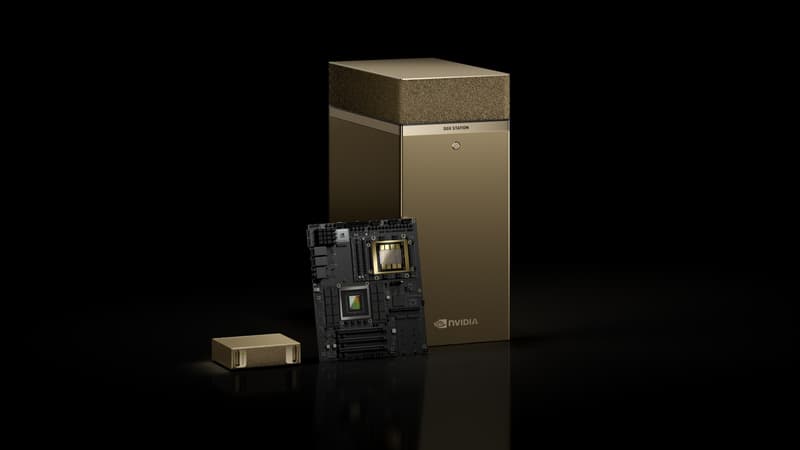It’s a frantic race that OpenAI is offering to all its competitors, some of whom are also its customers. In its effort to maintain the top position, OpenAI is placing hundreds of billions of dollars in chip orders. Amounts totally disconnected from their current income and that are beginning to worry some investors.
26 Gigawatts in a few weeks…
In less than a month, the creator of ChatGPT has just committed to Nvidia, AMD and Broadcom to acquire processors with a total power of 26 gigawatts (GW), which represents at least ten million units in total, which will require the electrical production of more than twenty nuclear reactors.
“They will need hundreds of billions of dollars to meet their commitments,” summarizes Gil Luria, from the financial consulting firm DA Davidson.
But OpenAI only expects to generate around $13 billion in revenue in 2025, loses several billion each year, and doesn’t expect to be profitable until 2029.
What sources of financing?
Asked by AFP, the group refused to communicate about the financing of these frenetic purchases. During an interview with CNBC, OpenAI president Greg Brockman spoke of “different mechanisms,” without further details.
Also contacted by AFP, Nvidia, AMD and Broadcom did not say more about the payment conditions for these processors, essential for the development of AI.
In the case of Nvidia, the Santa Clara, California giant has committed to acquiring $100 billion worth of OpenAI shares over several years, an influx of new money that may allow the darling of AI to absorb some of the cost of the chips.
This mechanism is often called circular financing, where a supplier offers the means to a customer to purchase their goods or services.
AMD has agreed to deliver securities to its client, whose value could reach tens of billions of dollars, a very atypical operation because it does not include any consideration.
“This is another example of unhealthy behavior,” says Gil Luria, who testifies in passing that “AMD is willing to do anything to sell its AI chips.”
OpenAI chief Sam Altman “has the power to derail the global economy for a decade or take us to the promised land,” wrote Bernstein analyst Stacy Rasgon. “And at this point, we don’t know how it will end.”
“Anticipate the avalanche of demand”
Raising capital, particularly from Nvidia, “will not be enough” to pay the bill, Gil Luria estimates, even with a current valuation of $500 billion, “so we will have to take on special debt.”
Some speak of ad hoc financial vehicles, which would borrow the necessary sums by providing the chips as collateral, a formula that Nvidia and xAI, OpenAI’s competitor, will use within the framework of another partnership.
The strategy is all the bolder since the start-up’s competitors include Google and Meta, which generate tens of billions of dollars in cash each year and have completely different firepower.
The term speculative bubble has become increasingly common in recent weeks, as have comparisons with the colossal investments in Internet infrastructure of the late 1990s, particularly cable, which were out of step with the still moderate traffic of the time.
“This time it looks a little different,” says Josh Lerner, a finance professor at Harvard University, because “it’s clear that there is real demand for AI in many forms.”
“They have the strongest growth we’ve ever seen for a software publisher,” CFRA analyst Angelo Zino recalls of OpenAI, with more than 800 million weekly ChatGPT users and “an ecosystem that is growing very quickly.”
“We are looking with this industry (of processors) to anticipate the avalanche of demand that is coming to us,” said Greg Brockman. “The problem,” recognizes Angelo Zino, “is the lack of income, which makes traditional financing very difficult. That is why we think that these associations make sense and we do not see them as problematic.”
Despite the dissonant voices, Wall Street, for the moment, stays the course and continues to bet massively on AI flagships. “It’s a dilemma,” according to Josh Lerner. “How can we determine between the future potential (…) and the speculative side of this projected income?”
Source: BFM TV


